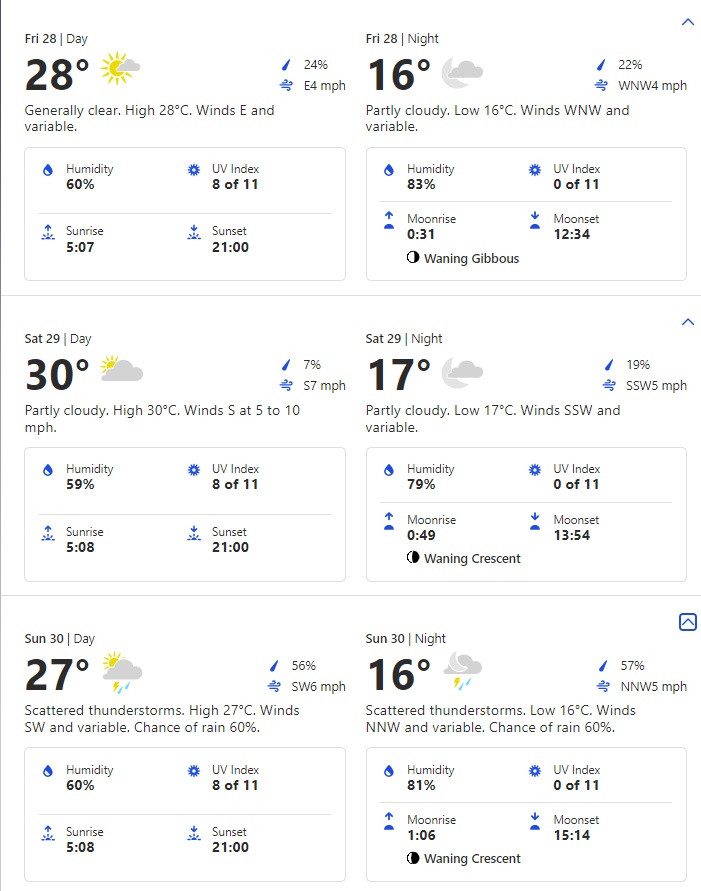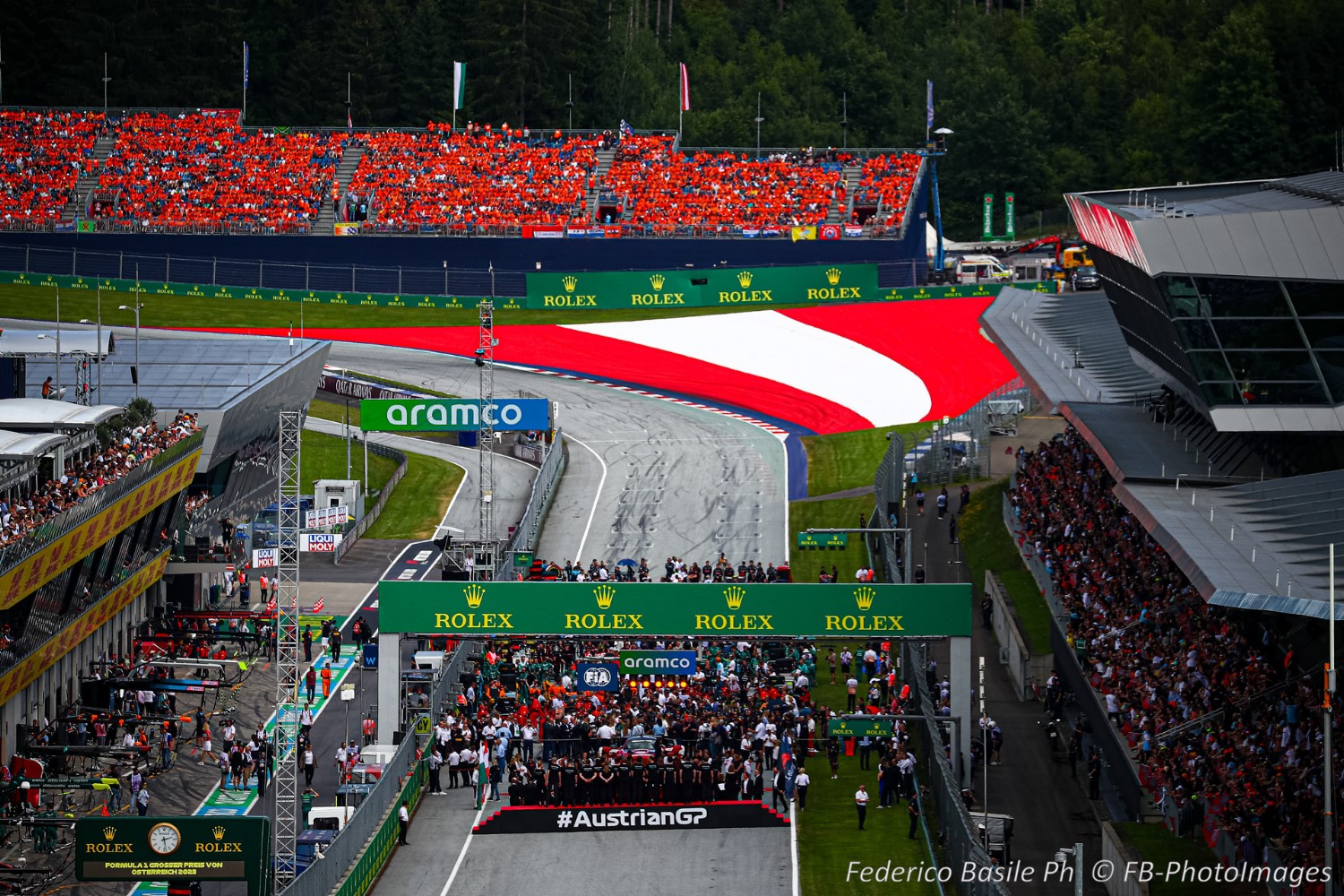F1 News: 2024 Austrian GP at the Red Bull Ring Preview
Round 11 of the 2024 FIA Formula 1 World Championship takes the 10 F1 teams to the Red Bull Ring, for the Austrian GP.
Max Verstappen has won 7 of the 10 races run so far in 2024. Can he win again, carrying his inferior Red Bull on his back?
Austria made its first appearance in Formula 1 in 1964, at the unloved and featureless Zeltweg Airport, and when it made its full-scale championship return in 1970 it did so at the new Osterreichring, a fast and undulating circuit in the hills above the village of Spielberg.
Gone is the daunting layout of the Osterreichring, its sweeping corners on which Peterson, Brambilla and home hero Lauda all fought, consigned to history; parts of the original track remain in use in its new, shorter, nimbler layout, first used in 1997, but the track is very much different.
Austria was a fixture on the schedule through 1987, before it disappeared, re-emerging from 1997 until 2003 at the shortened and rebranded A1-Ring.
Another absence followed, with the entire facility falling into a state of disrepair, before it was acquired and renovated by Red Bull. Formula 1 returned to Austria in 2014 at the renamed and refreshed Red Bull Ring. At just 4.3km, and with only 10 corners, it is one of the shortest circuits on the calendar, and with lap times of around 65 seconds, Austria provides one of the closest qualifying sessions of the season.
Reception of the new layout wasn’t universally positive: yet the argument that constitution is not identity was reinforced by the series of entertaining, exciting races that the new track was able to provide – and that are still a feature of the Red Bull Ring to this day.
In the new Ring, the tradition of one of Formula One’s classic venues blends with the modern to produce a track that is exciting, fan-friendly, and boasting some of the most impressive facilities in the sport. Old and new come together, not as opposites but in synergy, to create something unique. It’s a race to look forward to; an event to savor and appreciate.
It’s almost by philosophical design, then, that this track is the one to see the debut of a new pilot project by the sport, with its introduction of sustainable sources of energy to power the operations of the paddock and a projected reduction of more than three quarters of its CO2 generation. The most traditional of sports powered in the most innovative of ways, in a classic venue reimagined for the future. Like the birth of a child, a new page is added, the latest in a long and cherished book: one that builds on the heritage and importance of all that was before, but a blank one and full of potential.
For the fourth successive year, there will be two ‘lights out’ opportunities in Austria. The venue hosted back-to-back grands prix in both 2020 – including the delayed season-opening event – and 2021, due to the pandemic. Last season Austria returned to its single grand prix but hosted F1 Sprint. Once more, the two-race format will feature this weekend, with separate qualifying sessions for the Sprint Race and the grand prix, as was first introduced in Baku in April. It will mark the second of six F1 Sprint events through the 2023 season.
The weather looks a bit unpredictable too, so it will definitely mix things up a little bit.
A word from last year’s winner – Max Verstappen
“We always feel really welcome and enjoy coming back to Austria, being a home race for Red Bull. The scenery and mountains around here are great, and it is always good to see the Orange Army fans here and really feel that support from the grandstand.
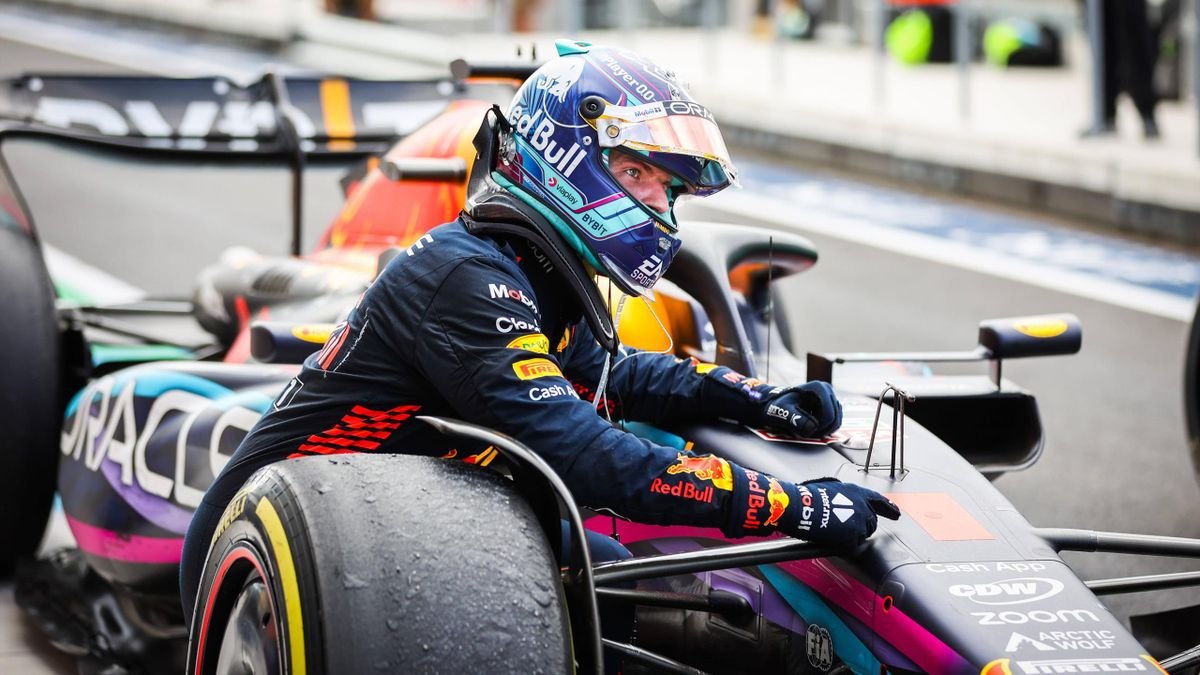
“It is another Sprint race this weekend, which always ends up being a hectic and busy weekend for us. It is really important to nail the set-up of the car straight away and analyze how best we build and improve on our previous races, especially as qualifying is always close here.
“The track lends itself to a lot of overtaking, so I’m sure it will be an exciting race. The Team performed well here last year, so hopefully we can do the fans proud this weekend and bring it home with another win.”
Race Insight
Race interruptions: The rate of Safety Car deployments is relatively low at the Red Bull Ring. In the last five Grands Prix here there have been five Safety Cars, but three of those appeared in the 2020 Austrian Grand Prix. As for Virtual Safety Cars, there have been just two VSCs since the system was introduced back in 2015.
Overtaking: With three DRS zones, it’s not difficult to overtake at the Red Bull Ring. More than 80 percent of passes use DRS and most of those overtakes take place going into Turn Three and Turn Four. With a 330-metre run to Turn One from pole position, drivers can also make up positions on the opening lap.
Strategy: As was the case in Austria last season, the softest Pirelli compounds are in play this weekend. The C3, C4 and C5 compounds are available but there’s just one hour of practice – on Friday – due to the Sprint. High-speed corners mean higher tire degradation and the possibility of a multi-stop race.
Unlocking the Lap
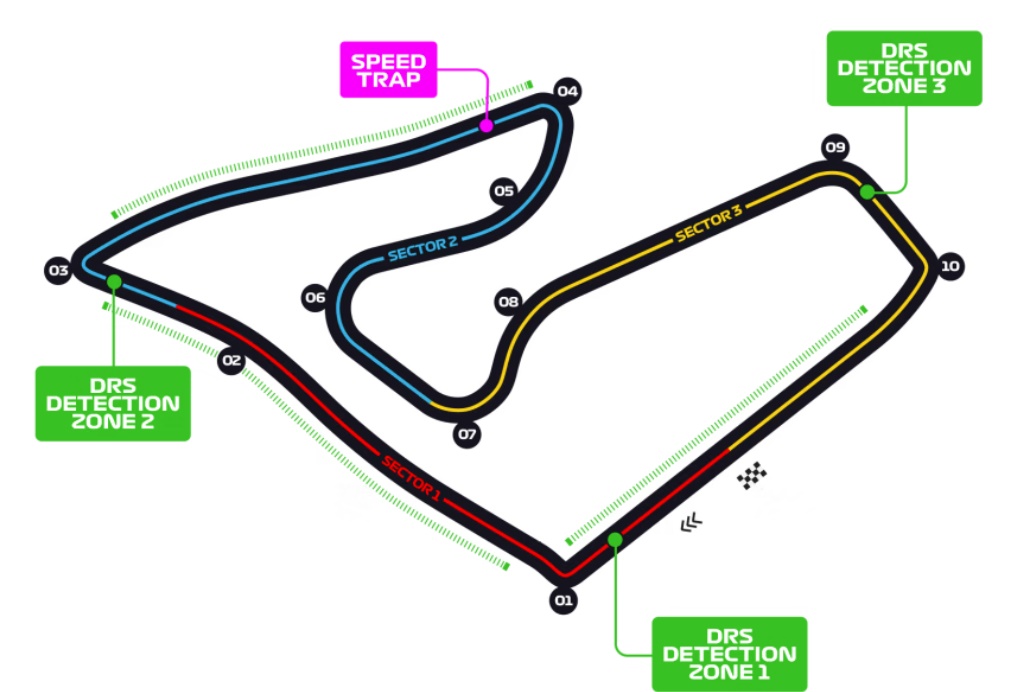
The Red Bull Ring is one of the shortest laps on the calendar but it pushes drivers with elevation changes and a smattering of high-speed corners. SentinelOne takes us through the 10 turns that await in Spielberg.
The long start-finish straight leads drivers uphill into the medium-speed right-hander that is Turn One. It’s imperative to carry as much speed as you can onto the following straight that takes you to Turn Three, which is the most challenging corner on the circuit. This sharp right-hand turn includes a raised curb and tight run-off area. The braking point and exit are both uphill, which means traction is at a premium here.
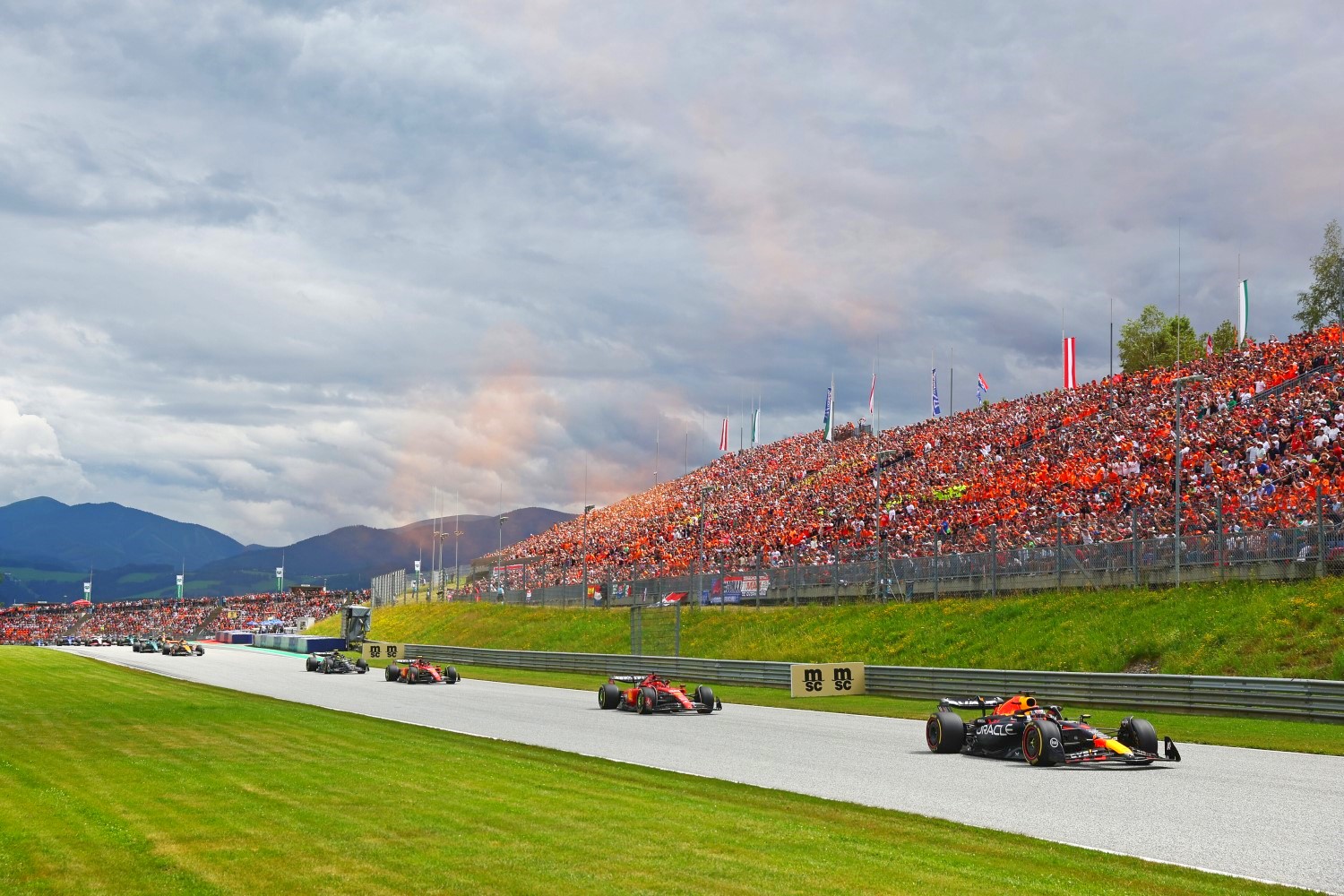
Then it’s downhill to the long Turn Four hairpin that leads through a host of fast turns: left through Turn Six, another left into Turn Seven and right through Turn Eight. This sequence is straightforward, but understeer through here can throw the car into the awaiting gravel traps.
Turn Nine is a rapid right-hander and the final corner, Turn 10, requires a good exit to set you up for the long uphill straight.
Fact File: Austrian Grand Prix
- With a lap record of just 1:02.939, set by Valtteri Bottas in 2020, the circuit in Spielberg is the shortest in terms of time on the 2023 calendar.
- Despite that, it ranks fifth in terms of shortest distance, clocking in at 4.318 km. Only Monaco, Zandvoort, Mexico City, and Interlagos are shorter.
- With just 10 corners, the Ring has the fewest of any track of the current F1 circuits. At the same time, Turns 2, 5 and 8 are taken at full throttle and are therefore not considered to be corners in an engineering sense.
- Austria is one of four tracks on the calendar in 2024 (Miami, Canada, and Las Vegas) to have three corners that are taken at full throttle.
- There are large demands placed on a car’s handling in Austria, whilst at the same time the circuit demands good mechanical grip at low speed (Turns 1, 3, and 4) and strong performance at high speed (Turns 6-7 and 9-10). Engineers have to find the best compromise with set-up in order to achieve the best lap time.
- The difference in elevation of 69 meters between the lowest and highest points at the circuit is one of the largest of the season. That is unsurprising given the track’s location in the Styrian mountains.
- It also has a steep gradient from track edge-to-edge in places, as exemplified by Turns 3 and 4. The circuit here slopes up towards the apex as the car drives over the crest while accelerating out of the corner. This can result in one wheel leaving the ground, causing challenges with braking, stability, and traction.
- The track has three very hard braking zones in succession on the approaches to Turns 1, 3, and 4. As the brakes are unable to cool down sufficiently over the rest of the track, as the lap is relatively short, it has an impact on the maximum pressures and general wear and tear experienced.
- For that reason, teams must apply significant cooling levels to the brakes. That poses a challenge in warming up the front tires. With a short out-lap, it is a challenge to get them in the right operating window for a qualifying lap.
- The Ring is notorious for its aggressive curbs and is considered to be one of the toughest tests for vehicle suspension. This especially applies to the curbs at the exit of T1, T6, and T7, which take a high toll on the cars due to their amplitude (i.e. the gap between the highest and lowest points of the curbs) and the frequency (speed effect) at which they are taken.
- To combat track limits violations, a 2.5 meter wide gravel strip has been added behind the curb at the exit of T9 and T10.
- With a maximum previously-recorded track temperature of 55.1 degrees, the surface at the Ring can be the hottest of the season.
- 2024 sees Austria host the third F1 Sprint weekend of the season. It will be the third year in a row Spielberg has hosted this format.
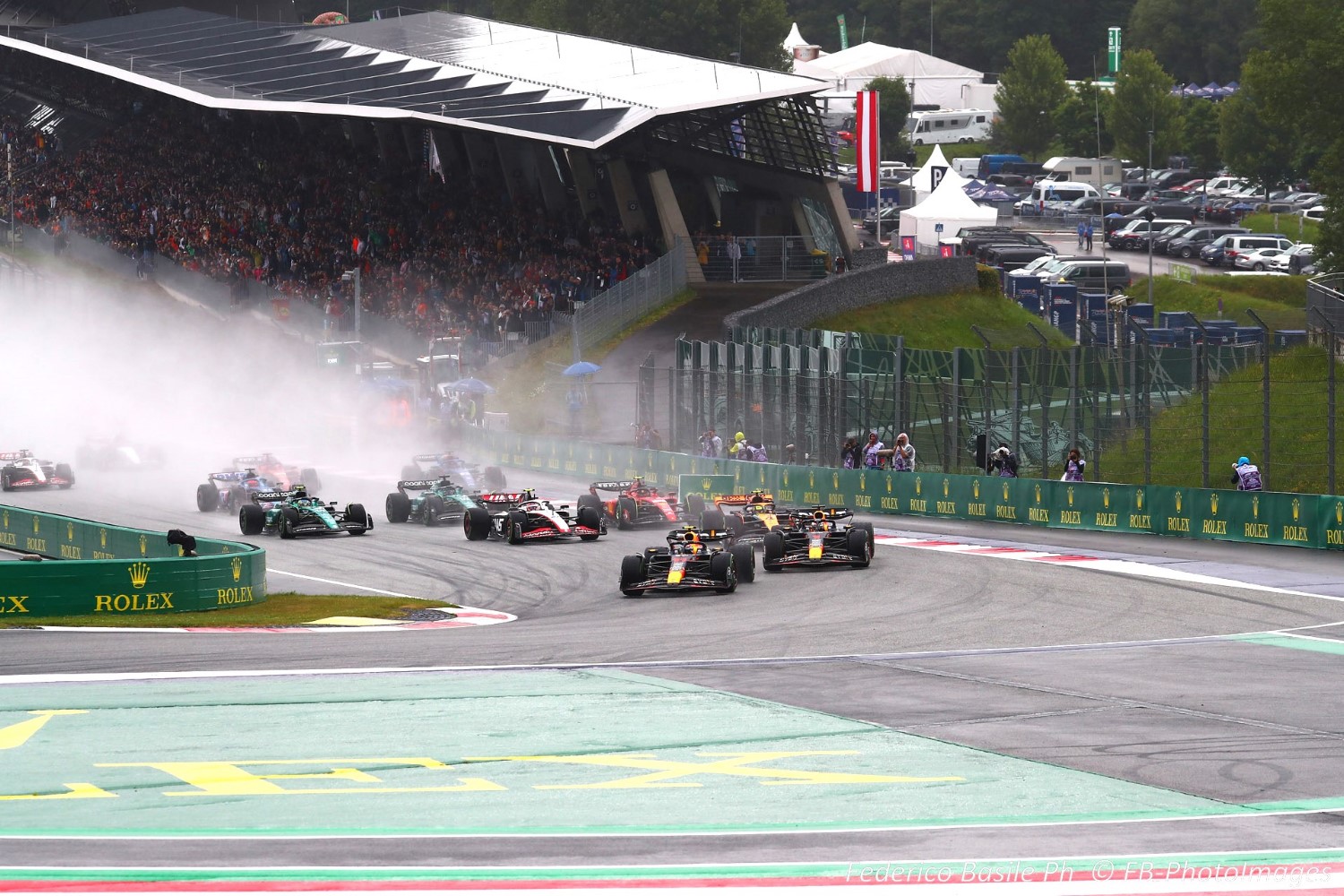

Pirelli Tires
As usual for this event, Pirelli has chosen the three softest compounds from the 2024 range, namely the C3 as Hard, the C4 as Medium and the C5 as Soft. The Spielberg track surface is quite old and therefore is highly abrasive, but the lateral forces exerted on the tyres are decidedly lower than the average for the season, resulting in very limited wear overall. Traction out of the slow corners and stability under braking are key contributors to being competitive at this track.
It is important to manage the tires in such a way as to avoid overheating, especially if they run at high temperatures: those drivers who don’t manage to keep them cool enough could end up finding it difficult to fend off attacks from other cars, especially in the first and last sectors. Therefore, another important factor will be the ambient temperature at a venue where the weather is often rather variable. For the past two editions of this race, the two-stop strategy proved quickest, running the Medium and Hard tires and last year, no driver gambled on the Softs.
The Styrian hills have been Formula 1’s only home in Austria, with 37 races held on the circuit now known as the Red Bull Ring and one, in 1964, on a track laid out at Zeltweg’s military airfield, the two venues separated by just a few hundred meters as the crow flies. This Sunday’s race will be the 37th Austrian Grand Prix and the races have been held in three periods of time. Following the first race at Zeltweg, the next ones were run at what was then known as the Osterreichring from 1970 to 1987, followed by the A1-Ring from 1997 to 2003 and finally with its Red Bull Ring nomenclature from 2014 onwards. In the years 2020 and 2021, the track also hosted the Styrian Grand Prix.
Although he has yet to turn 27, Max Verstappen is already the driver with the most wins (4) at this event, to which can be added victory in one Styrian Grand Prix. 25 drivers have made it to the top step of the Austrian podium at least once and of those, 11 have been crowned world champion at least once: the aforementioned Max, Alain Prost, Alan Jones, Mika Hakkinen, Michael Schumacher, Nico Rosberg, Emerson Fittipaldi, Niki Lauda, Nigel Mansell, Jacques Villeneuve and Lewis Hamilton. Of the teams, Ferrari and McLaren lead the way with six wins apiece, although Mercedes can claim the same number of wins at this venue, thanks to Lewis Hamilton’s victory in the 2020 Styrian Grand Prix.
This weekend, the Red Bull Ring hosts the third Sprint format weekend of the season, which means just one free practice session on Friday followed by Sprint qualifying. The Sprint race takes place on Saturday followed by qualifying for Sunday afternoon’s Grand Prix. This format has been used here three times, every year since 2022. To date, there have been 14 Sprint races and, hardly surprising, Max Verstappen has claimed the lion’s share, winning nine of them. Valtteri Bottas has won two, while Sergio Perez, George Russell and Oscar Piastri have one win each
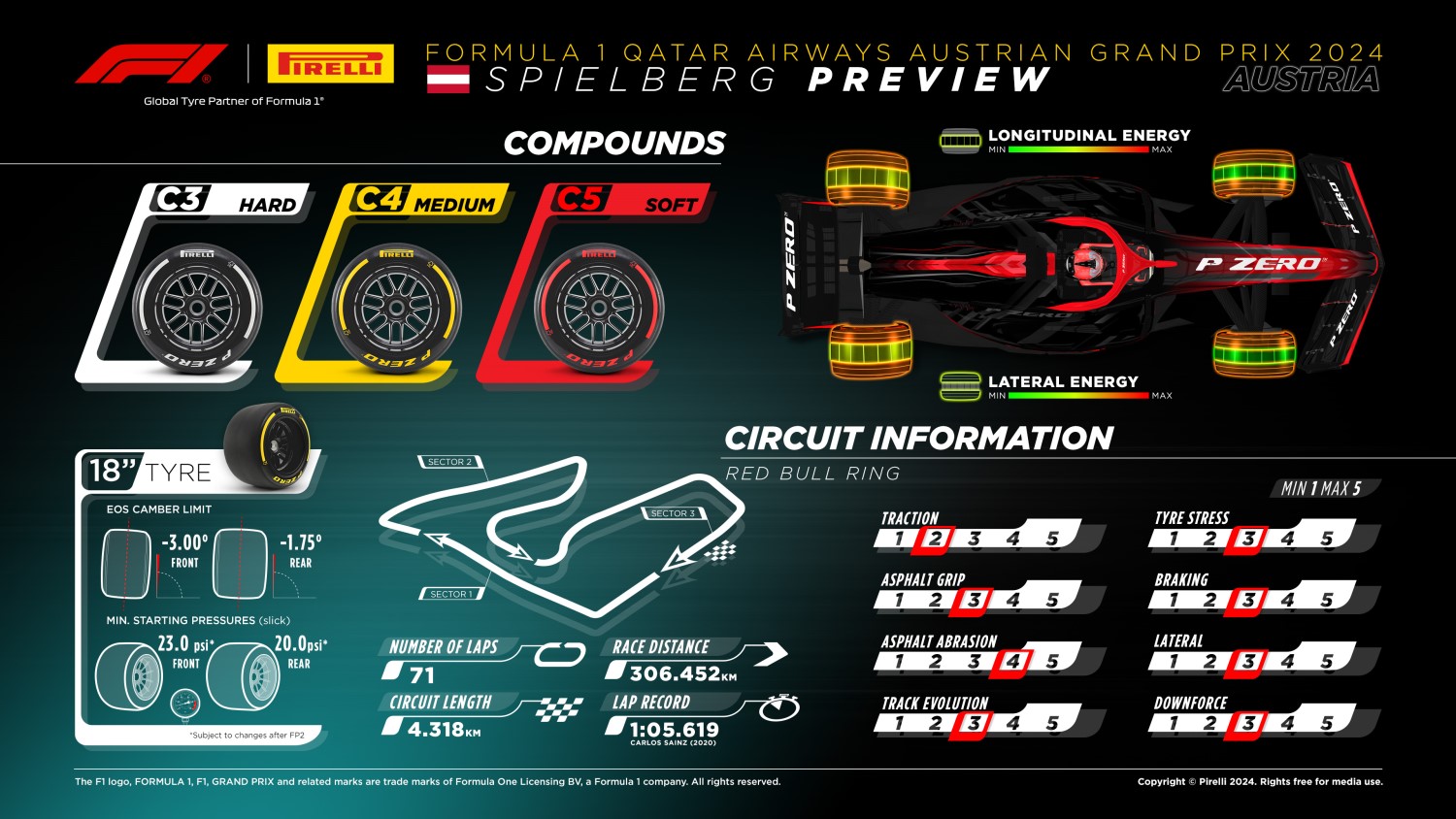
Weather Forecast (as of June 25th)
